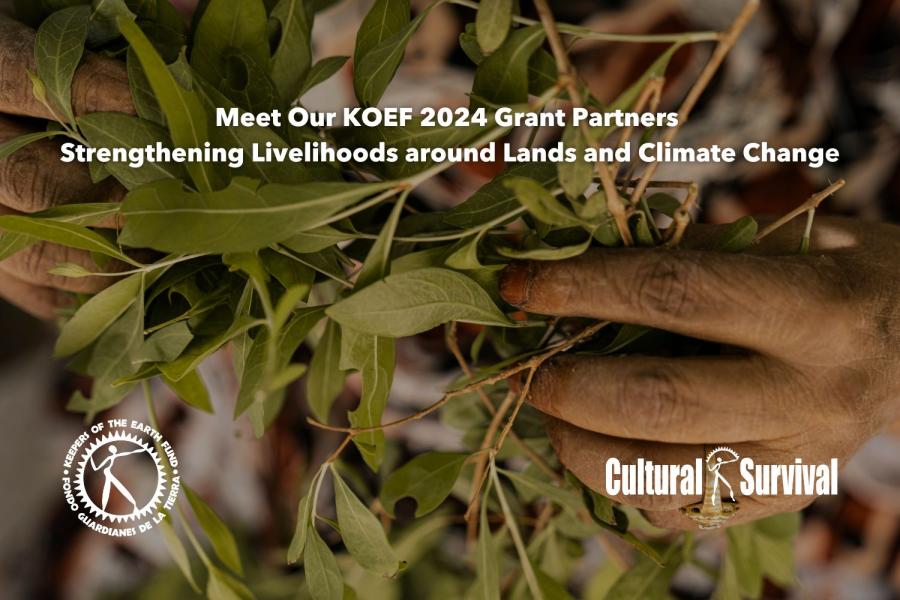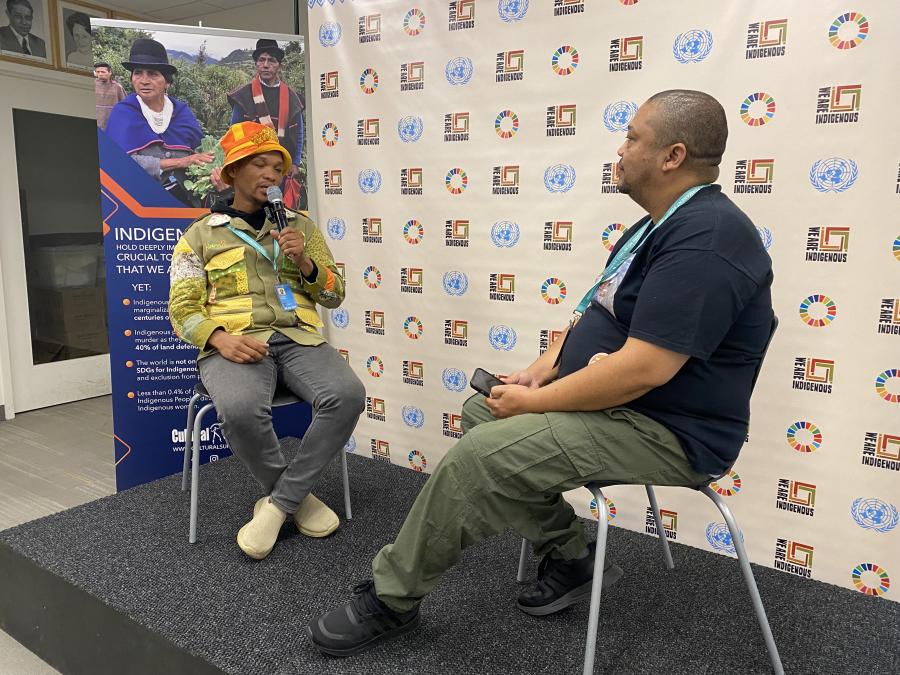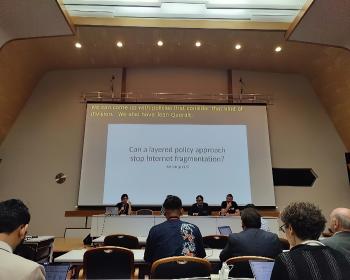Ubi jus ibi remedium. Since at least ancient Roman times, Western legal systems have recognized that where there is a right, there also must be a remedy. Western law now dominates the globe and underpins international human rights law. All national legal systems recognize the right to a remedy for general wrongs suffered, and international human rights law extends this by providing a right to reparations for human rights violations. Unfortunately, despite the long history of the concept and the ubiquity of the legal influence, the notion of remedy for wrongs has rarely been applied to indigenous peoples.
As the previous article illustrates, and as regular Cultural Survival Quarterly readers well know, throughout history indigenous peoples have been subjected to the most egregious human rights violations. Many indigenous people know the depths of human cruelty firsthand. Nearly all have grown up with daily reminders of past brutality directed against their people. Whether experienced directly or intergenerationally, such abuses produce psychological scars in both individuals and communities. Such suffering rattles their sense of security, wellbeing, and community cohesion. It renders them dependent on those who harmed them and strips them of the ability to make rational choices, fully express their cultural and spiritual beliefs, or care for themselves, their families, communities, and ancestors. Other common responses include post-traumatic stress disorder, depression, alcoholism, drug addiction, and a host of other problems that frequently plague indigenous communities.
The Forms of Reparation
Because the range of damages suffered by indigenous peoples is so great, there needs to be an equal variety in the forms of reparations. Financial compensation tends to be the most common and most easily measured kind of reparation, but it is by no means the only form, nor is it usually the best means of reparation for the wrongs indigenous peoples have suffered.
In April 2005, the United Nations Human Rights Commission adopted a set of international principles on reparation for victims of human rights violations. The principles covered five elements: restitution, compensation, rehabilitation, satisfaction, and guarantees of nonrepetition.
Restitution, monetary compensation, and/or rehabilitation should be offered for such things as physical or mental harm, lost jobs, stolen lands, or destruction of cultural heritage. Putting in place mechanisms to ensure that such abuses never happen again should be part and parcel of all types of reparations.
The notion of “satisfaction” is less familiar to people from countries with Anglo-American legal systems. It includes things like effective measures to end continuing violations; verification of the facts and public disclosure of the truth; search for the whereabouts of the disappeared; identification and reburial of the corpses of murder victims in accordance with the cultural practices of their families and communities; an official declaration restoring the dignity of the victims; judicial sanctions against the people responsible for the violations; and inclusion of an accurate account of the violations in history books. Satisfaction also includes public apologies, including acknowledgement of the facts and acceptance of responsibility, and commemorations and tributes to the victims.
While some governments have made reference to these guidelines, it is still too early to measure their influence. At the international level, however, the Inter-American Court of Human Rights has applied its own version of these principles in seven cases involving indigenous peoples in the Americas. One of those was the case of Plan de Sanchez Massacre v. Guatemala, which addressed a 1992 Guatemalan army mass killing of 268 Maya Achi men, women, and children. Among other things, the court ordered Guatemala to hold a public ceremony in the village of Plan de Sanchez to acknowledge its responsibility for the massacre and issue an apology; provide free medical and psychological assistance to survivors; provide adequate housing for villagers who wish to live in or return to Plan de Sanchez; and establish programs to provide Maya Achi cultural education throughout the affected community.
In other cases, the court has ordered Latin American countries to establish community-development funds; recognize indigenous lands and issue collective property titles; publicize the court’s judgment in news media in all national and local languages; and redraft the nation’s electoral laws so that indigenous peoples can participate in government without giving up their traditional forms of social and political organization.
While most international jurisprudence relating to indigenous peoples is coming from the Inter-American human rights system, the African regional human rights system also is testing the waters. In a case involving the Ogoni people against the Nigerian government and the Nigerian National Petroleum Company and Shell Petroleum Development Corporation, the African Commission on Human and Peoples Rights called on the government to compensate the Ogoni people for past violations of their rights, resettle victims of government-sponsored raids, and undertake a comprehensive cleanup of oil-damaged lands and rivers.
There also are promising cases coming out of national courts. In 1997, a Japanese district court ruled that the government had acted illegally when it approved the Nibutani hydroelectric dam on traditional Ainu territory. The court recognized that the Ainu were indigenous and called upon the Japanese government to respect Ainu culture. Because billions of yen had already been spent and the dam was filling with water by the time the court ruled, restitution was impossible—things could not be put back the way they were. But the court ordered the government to work with the Ainu to identify an alternative location for them, and to take other reparative action to ensure their cultural protection.
In South Africa, the new post-apartheid constitutional court ruled that 3,000 Nama Khoikhoi people living in Northern Cape Province who had been evicted from their lands to make way for a diamond mine had a right to their lands that was not extinguished by colonial annexation. Even more recently, in December 2006, the Botswana High Court ruled that the government’s eviction of San people from their Kalahari Desert homeland was illegal, and that they were entitled to return to their ancestral lands.
In Canada, as Mark Cherrington’s article in this issue describes, a spate of public denunciations and civil lawsuits in the early 1990s led the government to establish the Canadian Royal Commission on Aboriginal Peoples to investigate the impact of the country’s residential-school policies on that country’s First Peoples. The commission’s report was one of a number of events that led to a comprehensive settlement of the lawsuits that included financial compensation, the establishment of a truth and reconciliation commission, a commemorative program, and an endowment to the Aboriginal Healing Fund.
Legal Impediments to Reparations to Indigenous Peoples
Even where there are good intentions, remedying violations of the rights of indigenous peoples comes with an array of unique challenges. In many countries, the worst violations of indigenous peoples’ rights occurred more than a century ago. Those who suffered are long dead, as are those who caused their suffering. Often, politicians see reparations for indigenous peoples the way that Australian Prime Minister John Howard does: he has rejected what he calls the “black-armband view of Australian history,” and proclaimed that modern generations are not responsible for what happened in the past.
But even where there is political will to provide redress for past wrongs, legal systems create their own impediments. Legal systems are best equipped to deal with recent violations in which the victims are the claimants, the evidence is fresh, and there is a popular and political imperative to right the wrong—all conditions that don’t apply in centuries-old cases. Of course, violations of indigenous peoples’ rights often continue, in changing forms, up to the present. Thus, in addition to their claims for past atrocities including genocide, indigenous peoples today seek redress for more recent abuses, such as forcing indigenous children to attend boarding schools, the taking of indigenous lands or resources, the theft of cultural artifacts, or state-sanctioned discrimination. Providing remedies only for recent violations might be more legally achievable, not to mention more politically acceptable to the larger society, but for indigenous peoples it can create the impression that the state is trying to sweep the worst of past violations under the rug.
Reparations to indigenous peoples also are made difficult by the fact that the remedies indigenous peoples seek often do not conform to the standard remedies that Western legal systems have to offer. In Anglo-American law, the usual remedy for wrongful acts is financial compensation. Yet what indigenous communities may want most is the restoration of a particular parcel of land; resources to carry out programs to revitalize their language, arts, or other cultural practices; guaranteed autonomy to run their own educational systems; or even a transformation in the national political process to make room for their genuine participation in decision-making.
Another problem is that indigenous peoples suffered violations of their rights collectively and usually seek remedies for entire communities, not just for individual members. But Western law is focused on individual suffering and individualized compensation. Complicating this further is the fact that indigenous peoples are all different from one another, so the remedies that satisfy one wronged community might not satisfy another. Western legal systems, on the other hand, are blunt instruments that are not easily customized.
Many legal systems bristle with procedural hurdles, too, including provisions that make various individuals or governmental bodies immune from prosecution, ceilings on the amount or type of remedy, and statutes of limitations, which often run even if the claimant is unaware of or lacks the resources for access to the legal system. Moreover, these systems often require claimants to meet high standards of proof, are expensive to participate in, and all too often are corrupt or inefficient.
Finally, despite any pretense to the contrary, law and politics are intimately intertwined. Even where politicians are ready to recognize the harms suffered by indigenous peoples, they frequently put up a strong fight if it appears that they will have to give up resources or power to implement a reparations scheme. Some politicians regard indigenous peoples as conquered peoples who should just adapt to the changed conditions. Others may consider them backwards and feel that indigenous suffering is the fault of the people themselves, for not being willing to adapt. Others are caught between political and moral realities: while they recognize that indigenous peoples have been wronged, they also care about the well-being of non-indigenous constituents who have settled (perhaps for centuries) on indigenous lands, or who are dependent on drinking water, resources, or economic development from indigenous territories. Some are just plain greedy for the power or wealth that comes from dominating those who are, for the moment, weaker than they are.
Making Effective Reparations to Indigenous Peoples
Before meaningful reparations can be awarded, a court or legislature needs to fully comprehend indigenous perceptions of the issues at stake and the particular needs of the indigenous community. In many of the cases described above, the courts heard testimony not only from victims or indigenous community members, but also from anthropologists who were able to help the judges gain a greater understanding of the indigenous community’s legal and cultural traditions. The Inter-American Court of Human Rights, in particular, has worked hard to shape its awards to meet the cultural needs of indigenous peoples. For example, in Comunidad Sawhoyamaxa v. Paraguay, the court ordered Paraguay to take into account the community’s traditional law, values, and customs when creating a mechanism for indigenous peoples to reclaim their ancestral lands.
Unfortunately, domestic courts have been less enlightened. In Australia, two Aboriginal people, Lorna Cubillo and Peter Gunner, who were forcibly removed as children from their homes in the Northern Territory as part of the “Stolen Generations,” filed claims for compensation, but the court denied them. According to an article in the Courier Mail, the court ruled that Cubillo and Gunner “had failed to prove that government representatives had breached the laws of the day by removing them against their best interests.” In other words, because there was a law allowing government kidnapping at the time, there was no need for reparations now. Similarly, in a case involving an Aboriginal land claim, the Australian High Court recognized that Australian Aborigines have rights to their traditional lands, but the six judges in the majority relied on three distinct legal excuses for refusing to order the government to pay compensation.
Even where there is genuine governmental intent to provide reparations, conventional legal procedures are ingrained in the lawyers for both the government and the indigenous claimants, and those procedures wind up being incorporated into the reparations process, even if they are antithetical to the reparations’ purpose. It is not surprising, then, that the Canadian boarding school abuse settlement requires claimants to appear before an adjudicator, places the burden of proof on the claimant to show that he or she was harmed, and allows anyone accused of harming the claimant the right to rebut the testimony. Such safeguards are standard in Canadian tort law, as they are in all Western legal systems, yet to indigenous peoples, such requirements may be viewed as unnecessary, or even as impossible, re-traumatizing hurdles. A gentler process that involved less formalized procedures and psychological support for claimants, as well as placing the burden of proof on the government to show that abuse did not happen, would have been more healing.
In sum, it isn’t sufficient that governments or even the claimants’ lawyers believe that justice is being done. For reparations to be meaningful, they must fit the indigenous community’s sense of justice. To achieve this, indigenous peoples must be involved in designing both the content of reparations and the process by which they are delivered.
That doesn’t mean that Western law is irrelevant. Rather, it means that responsibility must be shared by the court, the legislature, and the appropriate decision-making bodies of the wronged indigenous community. The outcome may be an unconventional reparations process, and officials may face extra work to win the approval of the non-indigenous society, but that’s what it takes to create effective reparations: true respect for and involvement of the victims in crafting the outcome, true commitment on the part of the government and the society to right the wrongs of the past, and true transformation of the process so that decision-making power is fairly distributed among the non-indigenous and indigenous parties.



